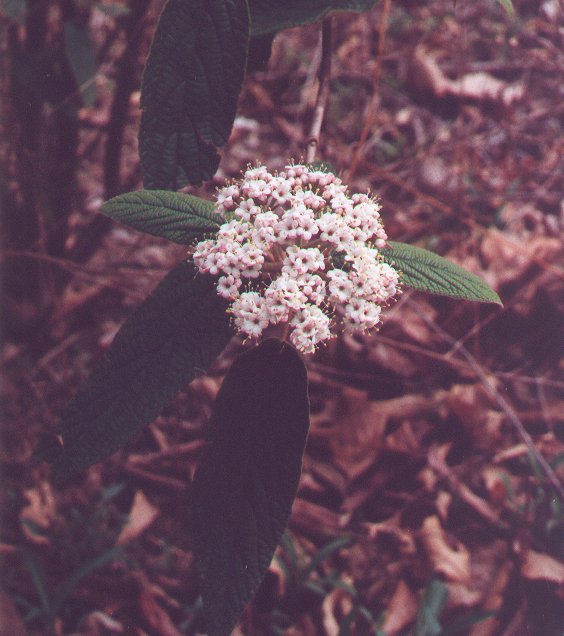Viburnum rhytidophyllum Hemsl.
Leatherleaf Arrowwood

Introduced
CC = n/a
CW =
MOC = 0
© DETenaglia
Viburnum rhytidophyllum Hemsl.Leatherleaf Arrowwood | |
 |
Introduced CC = n/a CW = MOC = 0 |
© DETenaglia |
|
Family - Caprifoliaceae Stems - Woody, multiple or occasionally single. A shrub or small tree to 6m tall. Twigs dense with ferruginous or grayish stellate hairs. Leaves - Opposite, petiolate, elliptic, somewhat cordate at base or not, to +15cm long, +7cm broad, upper surface glabrous or with some stellate pubescence, lower surface densely stellate pubescent, margins with minute prickles or protrusions. Petioles densely stellate pubescent.
Inflorescences - Terminal umbellate cymes, to +10cm broad. Densely stellate pubescent.
Flowers - Flowers - Corolla 5-lobed, to 8mm broad, whitish, glabrous. Lobes rounded, -2mm long and broad. Stamens 5, alternating with lobes, borne at base of corolla tube, erect and exserted well beyond corolla. Filaments to +4mm long, glabrous, whitish. Anthers yellow-brown, to 1.1mm long. Calyx tube to 1.5mm long, stellate pubescent. Lobes minute.
Fruits - Drupelike berries to 8 mm long, ovoid, single seeded, red at first, ripening to purplish-black. Flowering - May - June. Habitat - Cultivated. Origin - Native to Eurasia. Other info. - This plant is very commonly cultivated in Missouri. The hairs of the plant cause irritation to some people, like myself. The fruits are interesting in that the entire cluster does not ripen at once so both red and black fruits are present at the same time giving the plant added color. The flowers of this plant are not as fragrant as other plants in this genus which bloom around the same time. Photographs taken at the Kansas City Zoo, 11-4-99 and 4-12-00. |